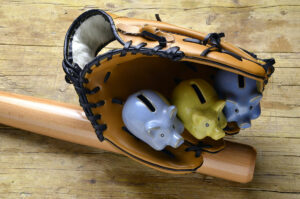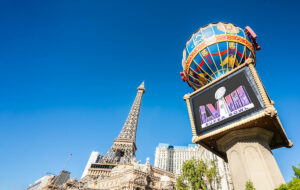Making Monetary Policy a Spectator Sport

With fears of an impending recession abating – for now – the question of the hour is when the Federal Reserve Board will cut interest rates. But much of the speculation about what the Federal Open Market Committee plans to do at their two-day meeting beginning March 19 resembles the horserace coverage common to electoral politics more than reasoned monetary policy discourse.
So maybe Fed-watching is becoming a spectator sport in its own right. But the race analogy doesn’t quite fit.
If horseracing is the sport of kings, then the sport of commerce is golf. And the slow path of monetary policy decision-making is not unlike navigating 18 holes on a championship golf course. The stakes are high on every shot and the target is always clear. The sports metaphor does have the advantage of breaking down complex macroeconomic thinking into simple concepts. Much like a professional golfer relies on experience, knowledge, ability and instinct in shot selection, Fed policymakers carefully consider alternatives and pay close attention to conditions before teeing up a monetary policy decision.
In that spirit, reporting the run-up to the next FOMC meeting might sound something like this:
Welcome to what we all hope is the final round of the Federal Open Market Championship here at the beautiful Marriner S. Eccles Meeting and Country Club. It’s been an interesting tournament so far, and the competition for the FOMC Cup is really heating up.
Jerome Powell sits at the head of the table and the top of the leaderboard and has played a steady, if cautious, round so far. As he made the turn to the back nine, he took a safe line off the tee and finds himself in a difficult lie just off the fairway. Powell is faced with a difficult choice for his next shot. He can take the ball through the trees and aim for the green, or using less club, he can punch out of the rough to set up a more certain third shot.
The winds today have been favorable, despite forecasts of a shift to harsher conditions. If Powell wants to go for the eagle, he has a window of opportunity but must carry a water hazard to reach the tiered green.
The crowd is urging Powell to pull out the 1-iron, grip it and rip it, but he seems to be hesitating, checking and re-checking the flagstick to gauge the wind direction. It’s not an impossible shot from where he is laying, and despite what Lee Trevino said about hitting a 1-iron, this shot is in Powell’s wheelhouse.
We’ll be right back after a word from our sponsor…
One thing is for sure. Whatever club Powell and his colleagues pull out of the bag, there will always be second-guessers and armchair economists questioning their choice. Unless it ends up being a brilliant shot. Then they’ll claim they never had a doubt.









